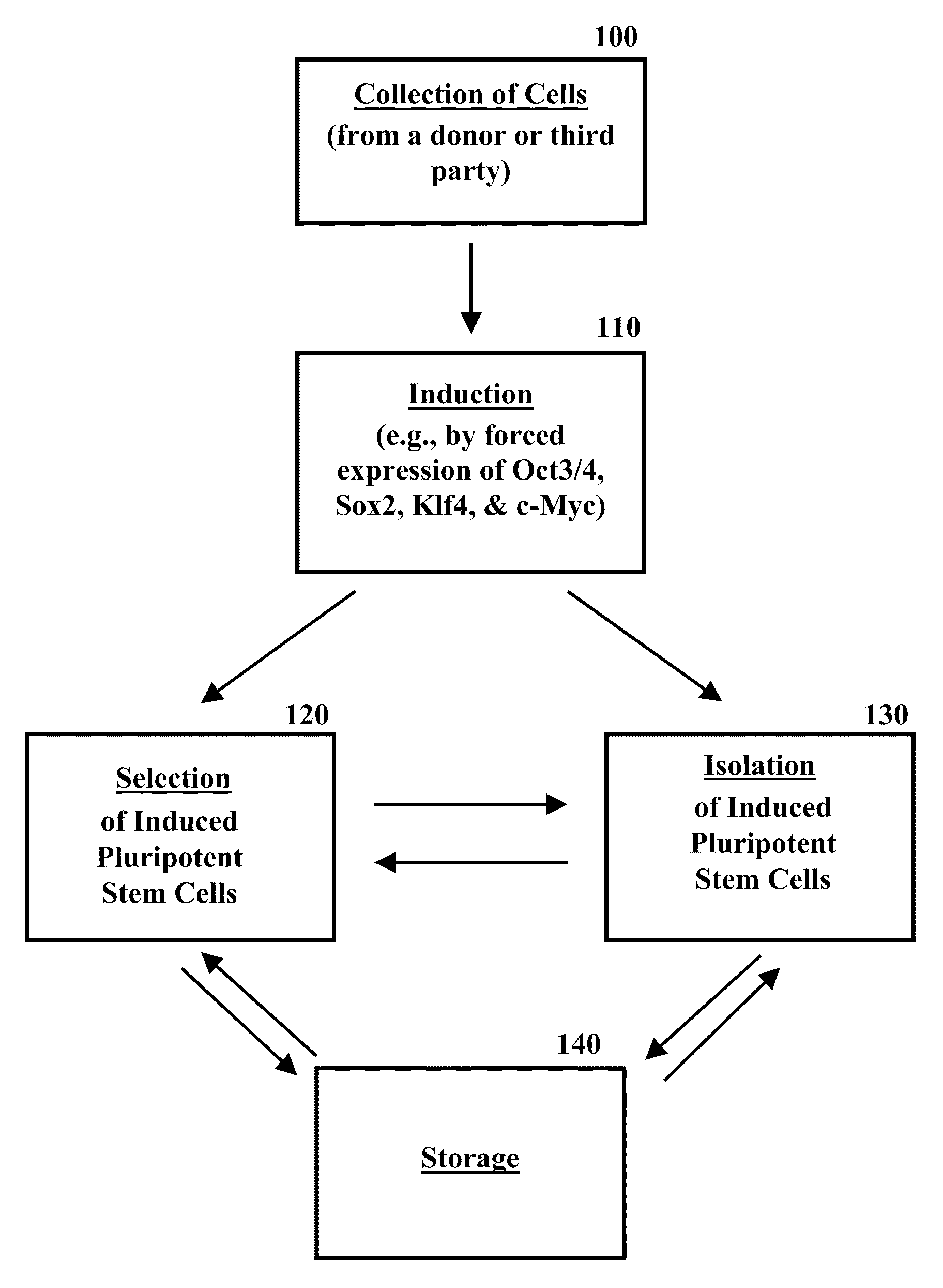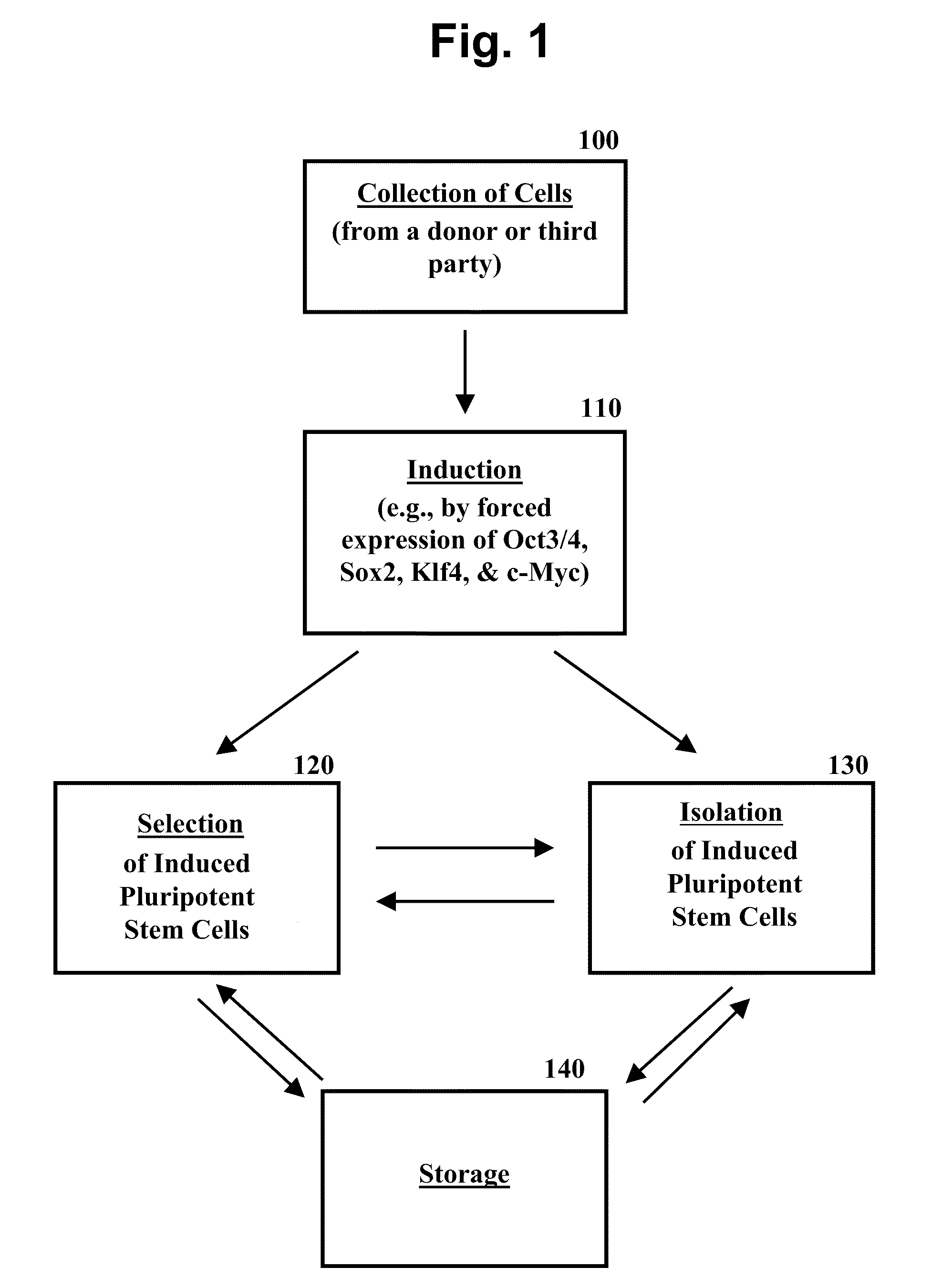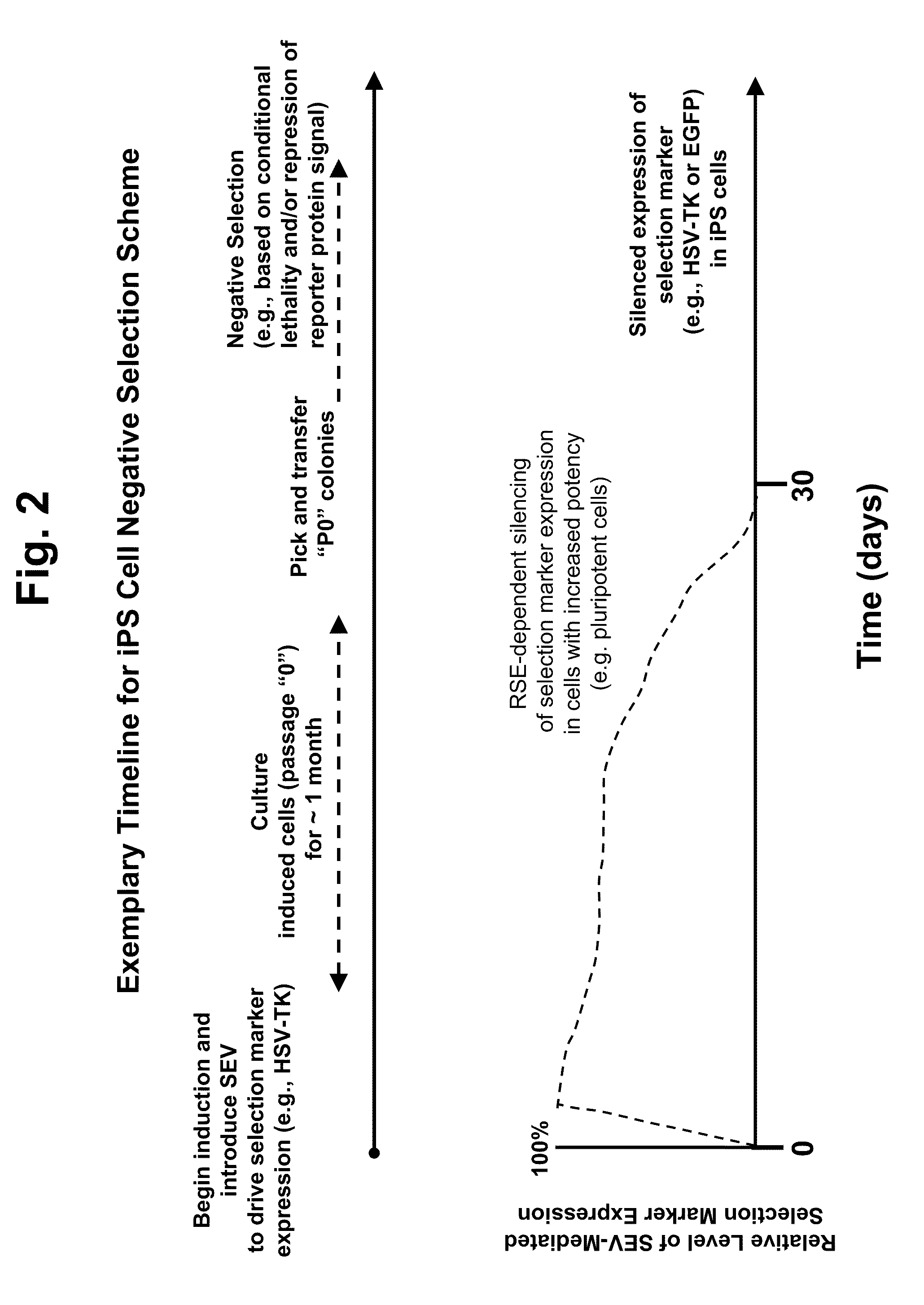Methods and compositions for selection of stem cells
a technology of stem cells and compositions, applied in the field of stem cell selection methods and compositions, can solve the problems of impeded efficient application of this technology and inefficient isolation of ips cells, and achieve the effect of maintaining pluripotency
- Summary
- Abstract
- Description
- Claims
- Application Information
AI Technical Summary
Benefits of technology
Problems solved by technology
Method used
Image
Examples
example 1
iPSC Derivation using Viral Vector Conditionally Lethal Gene Selection
[0341]Murine Moloney retroviral vectors are constructed from pMXs packaging vectors (see, e.g., Kitamura et al., (2003), Exp. Hematol. 31, 1007-1014) encoding human, OCT4, SOX2, KLF4, MYC, or EGFP each followed by an IRES-thymidine kinase (TK) open reading frame. The nucleotide sequences of such vectors (pMXs-Oct4-IRES-TK, pMXs-Sox2-IRES-TK, pMXs-Klf4-IRES-TK, pMXs-c-Myc-IRES-TK, and pMXs-IRES-EGFP) are described in the vector sequence appendix that follows this section. Maps of pMXs-Oct4-IRES-TK and pMXs-Sox2-IRES-TK are shown in FIG. 4. Primary human fibroblast cultures are transduced with a cocktail of retroviral vectors with each vector at a multiplicity of infection of 10 for a period of 24 hours. Four transduction conditions for human iPS cell generation are tested:[0342]1. Transduction with three MoMLV retroviruses containing expression cassettes for human Klf4-IRES-tk, human Sox2-IRES-tk, and human Oct 4-I...
example 2
iPSC Derivation using Viral Vector Conditionally Lethal Protein-Fluoresent Fusion Protein Gene Selection
[0352]iPSC induction is performed as described in Example 1, but the negative selection marker gene encodes a fusion protein comprising the amino acid sequence of herpes thymidine kinase (on the N-terminal side) fused to a fluorescent protein such as EGFP or an EGFP variant (see, e.g., Jacobs et al (1999), Neoplasia, 1(2):154-161. Thus, the single fusion protein exhibits TK activity and fluorescence, and therefore there is no need for a separate retrovirus encoding a fluorescent reporter protein. This scheme has the advantage of avoiding the need to transduce cells with an additional virus for expression of a fluorescent reporter protein. In addition, as TK and the fluorescent protein are encoded in the same open reading frame, their protein expression level is identical, whereas this is generally not the case for expression of proteins using a bicistronic-IRES-containing vector. ...
example 3
iPSC Derivation using Viral Vector Conditionally Lethal Protein-Fluoresent Timer Fusion Protein Gene Selection
[0355]The time course of epigenetic silencing of retroviral transgene expression in induced cells is relatively long (at least about two weeks) and may be quite variable between clones and different cell types. Thus, the optimal timing of negative selection for putative iPSC clones may also be quite variable. Example 2 describes the use of a bifunctional TK-EGFP fusion protein to allow both monitoring of viral transgene expression over time by epifluorescence and suicide gene negative selection by incubation with the TK-activated prodrug ganciclovir. Over time, as viral transgene expression is silenced, the level of EGFP fluorescence will wane. However, the absolute level of EGFP fluorescence from clone to clone is expected to be variable, and therefore for clones showing very low EGFP fluorescence initially, it may be difficult to distinguish changes in absolute EGFP fluore...
PUM
| Property | Measurement | Unit |
|---|---|---|
| time | aaaaa | aaaaa |
| time | aaaaa | aaaaa |
| time | aaaaa | aaaaa |
Abstract
Description
Claims
Application Information
 Login to View More
Login to View More - R&D
- Intellectual Property
- Life Sciences
- Materials
- Tech Scout
- Unparalleled Data Quality
- Higher Quality Content
- 60% Fewer Hallucinations
Browse by: Latest US Patents, China's latest patents, Technical Efficacy Thesaurus, Application Domain, Technology Topic, Popular Technical Reports.
© 2025 PatSnap. All rights reserved.Legal|Privacy policy|Modern Slavery Act Transparency Statement|Sitemap|About US| Contact US: help@patsnap.com



